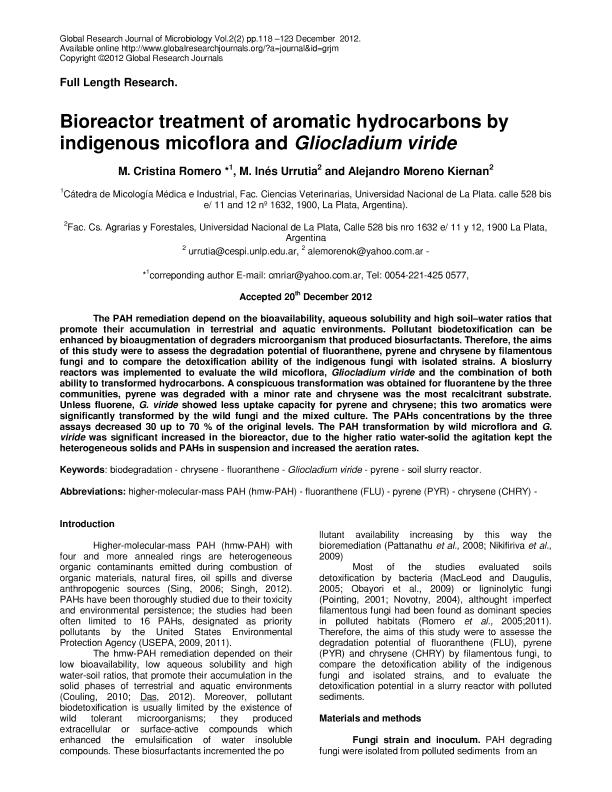Artículo
Bioreactor treatment of aromatic hydrocarbons by indigenous micoflora and Gliocladium viride
Fecha de publicación:
12/2012
Editorial:
Global Research Journals
Revista:
Global Research Journal of Microbiology
ISSN:
2315-5094
Idioma:
Inglés
Tipo de recurso:
Artículo publicado
Clasificación temática:
Resumen
The PAH remediation depend on the bioavailability, aqueous solubility and high soil–water ratios that promote their accumulation in terrestrial and aquatic environments. Pollutant biodetoxification can be enhanced by bioaugmentation of degraders microorganism that produced biosurfactants. Therefore, the aims of this study were to assess the degradation potential of fluoranthene, pyrene and chrysene by filamentous fungi and to compare the detoxification ability of the indigenous fungi with isolated strains. A bioslurry reactors was implemented to evaluate the wild micoflora, Gliocladium viride and the combination of both ability to transformed hydrocarbons. A conspicuous transformation was obtained for fluorantene by the three communities, pyrene was degraded with a minor rate and chrysene was the most recalcitrant substrate. Unless fluorene, G. viride showed less uptake capacity for pyrene and chrysene; this two aromatics were significantly transformed by the wild fungi and the mixed culture. The PAHs concentrations by the three assays decreased 30 up to 70 % of the original levels. The PAH transformation by wild microflora and G. viride was significant increased in the bioreactor, due to the higher ratio water-solid the agitation kept the heterogeneous solids and PAHs in suspension and increased the aeration rates.
Palabras clave:
BIODEGRADATION
,
CHRYSENE
,
FLUORANTHENE
,
GLIOCLADIUM VIRIDE
Archivos asociados
Licencia
Identificadores
Colecciones
Articulos(CCT - LA PLATA)
Articulos de CTRO.CIENTIFICO TECNOL.CONICET - LA PLATA
Articulos de CTRO.CIENTIFICO TECNOL.CONICET - LA PLATA
Citación
Romero, Maria Cristina; Urrutia, María Inés; Moreno Kiernan, Alejandro Ricardo; Bioreactor treatment of aromatic hydrocarbons by indigenous micoflora and Gliocladium viride; Global Research Journals; Global Research Journal of Microbiology; 2; 2; 12-2012; 118-123
Compartir




